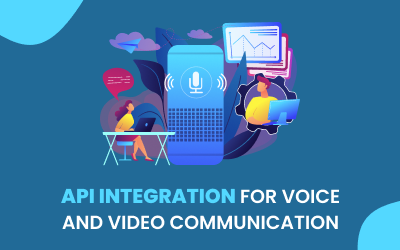In today’s digital era, communication plays a vital role in the success of businesses and organizations. With the rapid advancement of technology, voice and video communication have become increasingly popular, enabling people to connect and collaborate remotely. To further enhance these communication channels, API integration has emerged as a game-changer. In this article, we will explore the transformative power of API integration for voice and video communication, its benefits, challenges, and best practices.
API integration allows developers to connect different software systems, applications, or platforms seamlessly. When it comes to voice and video communication, API integration enables businesses to embed real-time communication capabilities directly into their applications, websites, or services. This integration empowers users to initiate and participate in voice and video calls, conferences, and meetings without the need for separate communication tools or interfaces.
The benefits of API integration for voice and video communication are significant. First and foremost, it provides a seamless user experience. Users can engage in real-time communication without the hassle of switching between multiple applications or platforms. This streamlined experience fosters efficiency and productivity, saving valuable time and effort.
Furthermore, API integration offers enhanced customization and branding opportunities. Businesses can tailor the voice and video communication interface to align with their brand identity, ensuring a consistent and professional look and feel. This personalization helps build trust and reinforces the organization’s image.
Additionally, API integration enables scalability and flexibility. As businesses grow and their communication needs expand, API integration allows for easy scalability, accommodating increased call volume and user demands. Moreover, API integration can be adapted to fit specific requirements, ensuring compatibility with existing infrastructure and workflows.
However, implementing API integration for voice and video communication does come with challenges. Security and privacy are primary concerns when transmitting sensitive voice and video data over the internet. It is crucial to ensure the implementation of robust encryption protocols and compliance with industry standards to protect user privacy and maintain data integrity.
To make the most of API integration for voice and video communication, businesses should follow best practices. First, it is essential to choose a reliable API provider with a proven track record and robust security measures. Thoroughly assess their documentation, support services, and scalability options before making a decision.
Moreover, businesses should consider the specific needs of their users and customize the communication interface accordingly. A user-friendly interface with intuitive controls and features will enhance the overall user experience and encourage adoption.
Regular monitoring and performance testing are also crucial to ensure the reliability and quality of voice and video communication. Proactive monitoring helps identify and address any issues promptly, minimizing disruptions and maximizing uptime.
In conclusion, API integration has revolutionized voice and video communication by seamlessly embedding real-time communication capabilities into applications, websites, and services. The benefits of API integration include a seamless user experience, enhanced customization, scalability, and flexibility. However, security and privacy considerations should not be overlooked, and businesses must follow best practices to leverage the full potential of API integration for voice and video communication. By embracing this technology, businesses can unlock new levels of collaboration, productivity, and customer satisfaction in the modern digital landscape.
